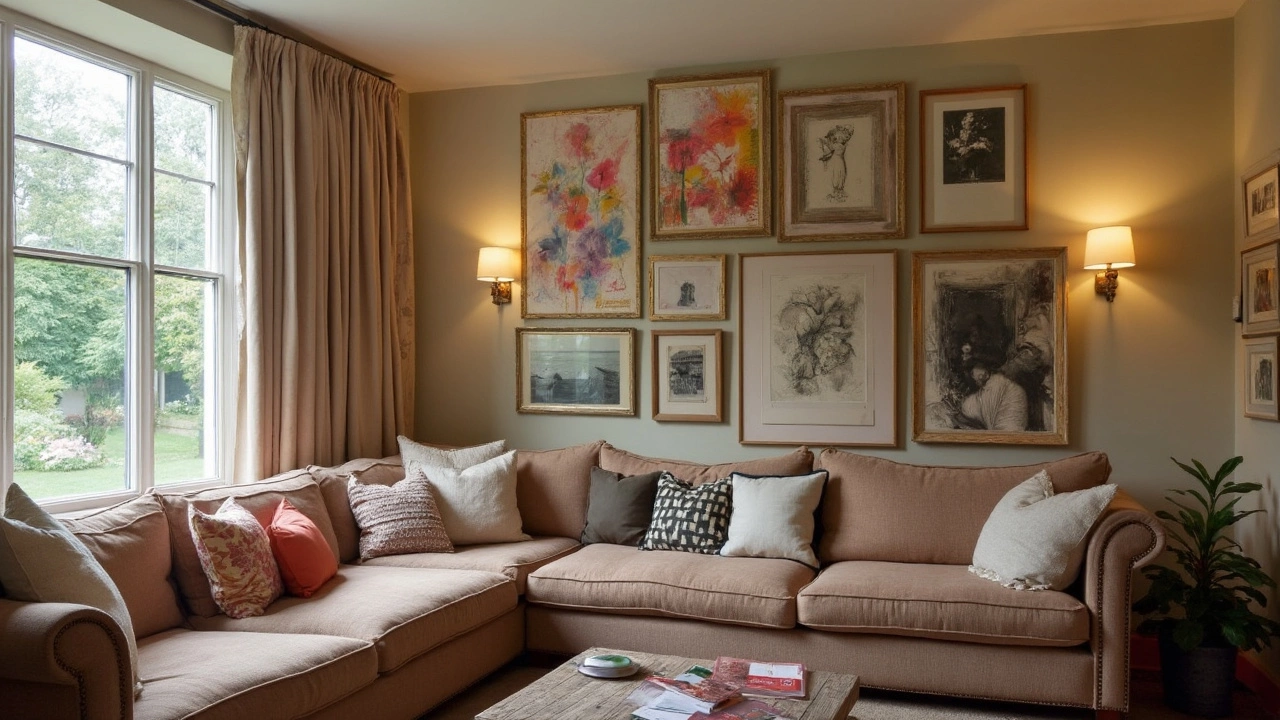Dive into the world of wall art to elevate your room’s aesthetics without a complete overhaul. Learn how colors, textures, and sizes play a crucial role in transforming bland walls into attractive spaces. Discover creative ways to arrange art pieces, personalize your art selection, and effectively use lighting. Whether on a budget or splurging, these tips will make any plain room pop with character.
Decor Tips You Can Use Right Now
Feeling bored with your walls, sofa, or kitchen? You don’t need a full remodel to see a change. A handful of smart decor tips can make a room feel fresh, stylish, and inviting without breaking the bank.
Play with Colour Without Painting
The easiest way to shift a room’s mood is by adding colour through accessories. Grab a few cushions, a bold rug, or a bright lamp shade. Choose one dominant hue and pair it with neutrals to keep the look balanced. If you’re unsure, look at the colour wheel – complementary colours (like blue and orange) create energy, while analogous tones (green and teal) feel soothing.
Don’t forget the power of paint‑like finishes. Peel‑and‑stick wall tiles or removable wallpaper can add a patterned backdrop to a single wall. They’re cheap, easy to install, and you can swap them out when you want a new vibe.
Smart Furniture Placement for Flow
How you arrange furniture often determines how comfortable a space feels. Start by creating a clear path through the room – a line from the entrance to the main focal point (TV, fireplace, or view). Keep furniture away from that path, and you’ll avoid traffic jams.
If your living room feels cramped, try pulling the sofa slightly away from the wall and adding a side table. This opens up floor space and gives the room an airy feel. In small rooms, consider multi‑functional pieces like a storage ottoman or a bench that doubles as a shoe rack.
Don’t overlook vertical space. Tall bookshelves, hanging plants, or wall‑mounted shelves draw the eye upward, making the ceiling appear higher. A few floating shelves can also showcase decorative objects without cluttering the floor.
Lighting is another secret weapon. Mix ambient, task, and accent lights to create layers. A floor lamp beside a reading chair, a pendant over the dining table, and LED strips behind a TV all add depth and make the room feel curated.
Finally, add personal touches. A framed photo, a travel souvenir, or a handmade vase tells a story and makes the space uniquely yours. Rotate these items seasonally to keep the look fresh without buying new decor.
Putting these tips together doesn’t require a designer or a big budget. Pick one or two ideas, try them out, and watch how quickly your home transforms. Got a specific room in mind? Use these basics as a checklist and tailor each suggestion to fit your style. Happy decorating!
Diving into a career in interior decorating combines creativity with practical skills. Whether you're drawn by a passion for aesthetics or the joy of transforming spaces, becoming a decorator involves understanding design principles, client interactions, and industry trends. This article guides you through the process of breaking into the field, offers insights on educational paths, networking strategies, and tips for building your portfolio. With these tools, you'll be well-prepared to start your journey into the exciting and evolving world of interior decorating.

